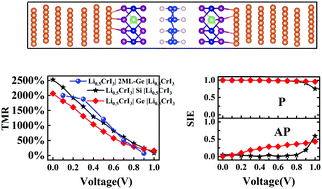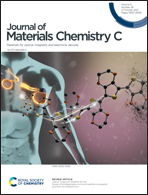High magnetoresistance and perfect spin filtering effect in silicane/germanene based magnetic Li0.5CrI3|Si/Ge|Li0.5CrI3 tunnel junctions
Abstract
A van der Waals (vdW) magnetic tunnel junction (MTJ) comprising different two-dimensional (2D) layered materials can be used in the field of spintronics owing to its significant tunneling magnetoresistance (TMR) and spin filtering effect (SFE). In light of the elemental compatibility with the existing Si/Ge based electronic components, we designed silicane and germanane based vdW-MTJs that comprise an insulator barrier sandwiched between two half-metallic Li-adsorbed chromium triiodide (Li0.5CrI3) electrodes. We investigated the magnetic anisotropy energy (MAE), SFE and TMR of these junctions by using the density functional theory combined with the non-equilibrium Green's function method. Large MAEs of up to 10 meV per unit cell and high Curie temperatures of up to 130 K were observed for Li0.5CrI3|Si/Ge|Li0.5CrI3 tunnel junctions, demonstrating their robust magnetic ability against thermal fluctuations. It was observed that these two MTJs not only exhibit high TMR ratios (over 2000%) but also possess a perfect SFE (almost 100%). Moreover, an obvious negative differential resistance was observed in our systems. The transport phenomena were explained using the spin-dependent transmission coefficients at different voltages. Our results suggest that the vdW MTJs formed by the silicane/germanane barrier and Li0.5CrI3 electrodes hold promising potential for future spintronic applications, such as in read heads and spin valves.



 Please wait while we load your content...
Please wait while we load your content...